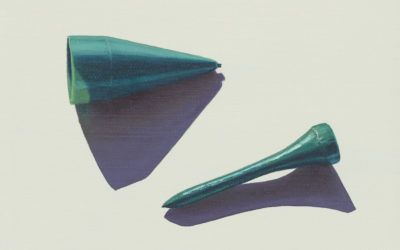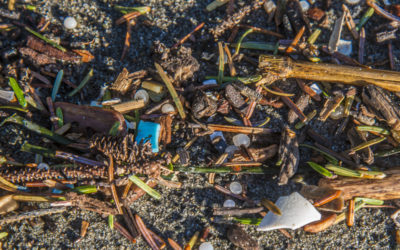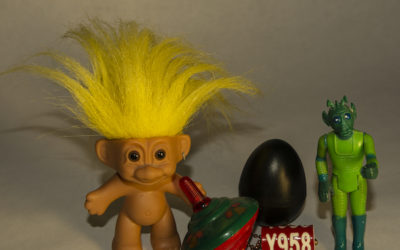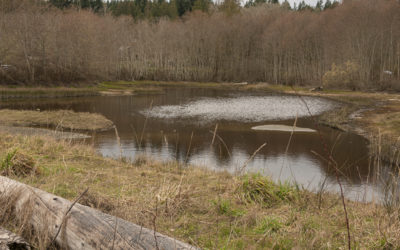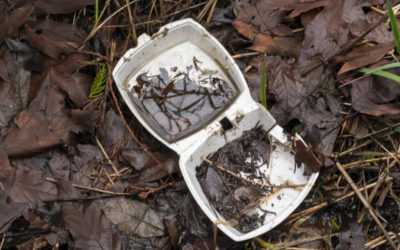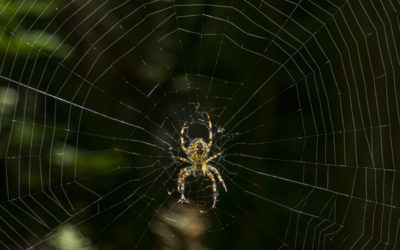PLASTICS AND OUR SALISH SEA
by Alison Ahlgrim, Spring 2020
Photo by John F. Williams
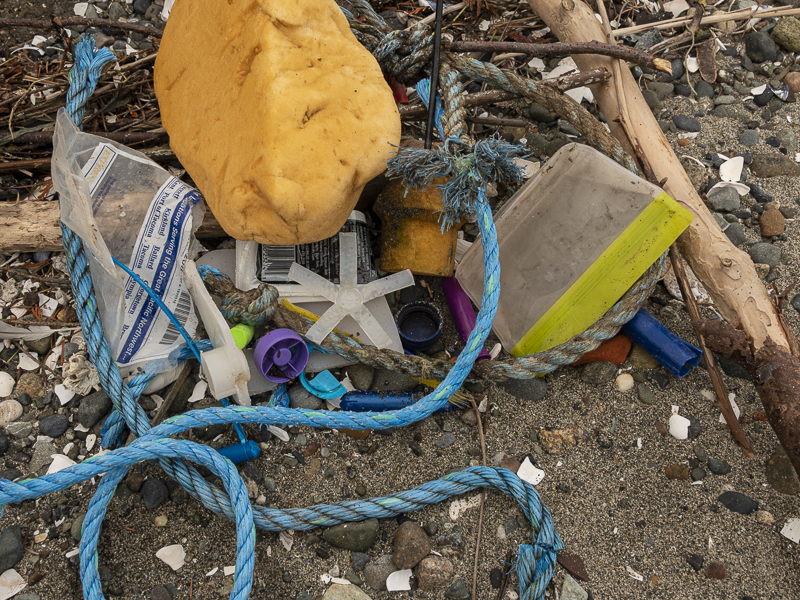
Photo by John F. Williams
PLASTICS AND OUR SALISH SEA
by Alison Ahlgrim, Spring 2020
Take a walk along a beach anywhere along the Salish Sea, and you are likely to see all kinds of plastic waste – bottle caps, bags, toys, Styrofoam, bottles, and much more. And this is just the plastic visible to the eye. Tons of plastics swirl in our waters from decades of pollution. It is estimated that more than six tons of plastic lie washed up on Salish Sea beaches at any given moment in time. On a global scale, about 8.8 million tons of plastic flow into oceans annually. By weight, this is equivalent to almost half a million school buses. Essentially, a garbage truckload of plastics is dumped into the ocean every minute. At this rate, by 2050, there will be more plastic by weight in the ocean than fish.
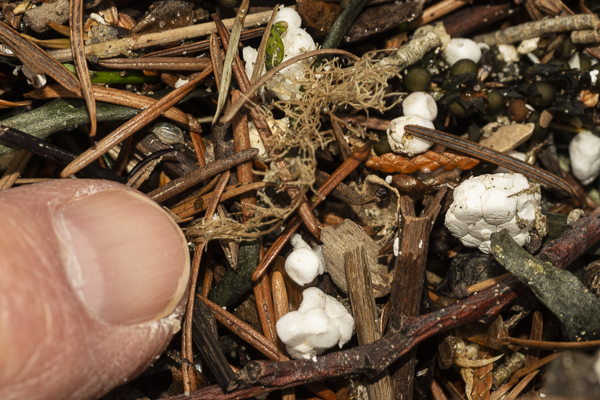
Photo by John F. Williams.
Most of the plastics in the marine environment are ones we cannot even see on our beach walks. Microplastics, which are less than 5 millimeters in size, dominate the plastic pollution problem. While some of these microplastics come from larger plastics that have broken down, recent research demonstrates that the majority (73 percent by volume) of plastics found on local beaches are microfibers. These tiny fibers are ubiquitous in ocean waters. Numerous studies in recent years have found these microplastics in every single sample taken from the Salish Sea, whether water samples, sediment samples, or samples taken directly from beaches.
An article from UW News clarifies, “These thin strands are not from the breakdown of larger litter, such as plastic bottles or disposable cutlery; rather, they start when fabrics shed fibers that flow out with laundry water after washing synthetic fabrics, like polar fleece or other types of polyester.” A single sweater can release up to 10,000 microfibers, which enter the water stream through laundry. Water treatment plants do not yet have filters with fine enough mesh to prevent these fibers from slipping through.
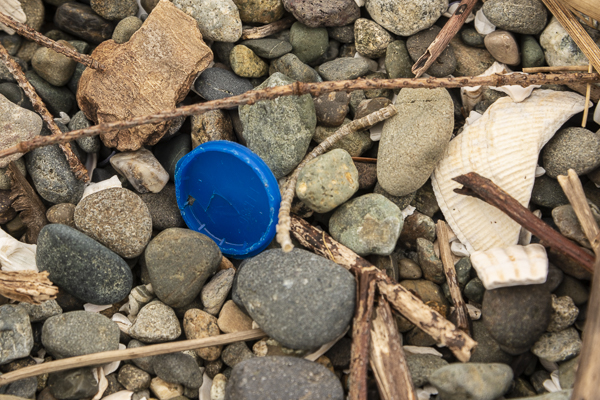
Photo by John F. Williams.
It isn’t even simply our local habits translating to local plastic pollution—in fact, plastic can have a global footprint, as microplastics can easily be carried by both water and wind. Scientists are finding microplastics on remote mountains peaks, far from sources, where they have been carried on the wind.
Because plastic does not break down on a scale of years or even decades, having this much plastic in the oceans and on coastlines is a problem that continues to compound every year, affecting ecosystems and food chains in ways that research is only just beginning to examine. The research that has been done on the impacts of plastics in our food webs show a much bigger problem than anyone initially imagined. Microplastics can directly affect smaller animals by interfering with their digestion, causing breathing problems, or loading their tissues with toxic chemicals. These chemicals bioaccumulate as they move up the food chain, becoming more concentrated in salmon, seals, whales, and humans.
Recent research has also found that plastics can serve as vectors for microorganisms and parasites, as well as adsorb trace metals and other pollutants. Thus, in addition to the chemicals contained within the plastic fibers themselves, plastics can also carry many kinds of additional toxins.
According to a recent article in The Washington Post, chemicals found in plastics have been linked to a variety of health issues, such as negatively impacting human reproduction, increasing obesity, damaging organs, and causing developmental delays in children. If plastics continue to enter and bioaccumulate in our food chain, the health impacts on humans are likely to increase.
Tackling this problem can feel daunting. What can the average person do to prevent these plastics, including so many tiny fibers, from entering our waterways? Is it something people should care about in the first place, given how many other pressing environmental issues we face?
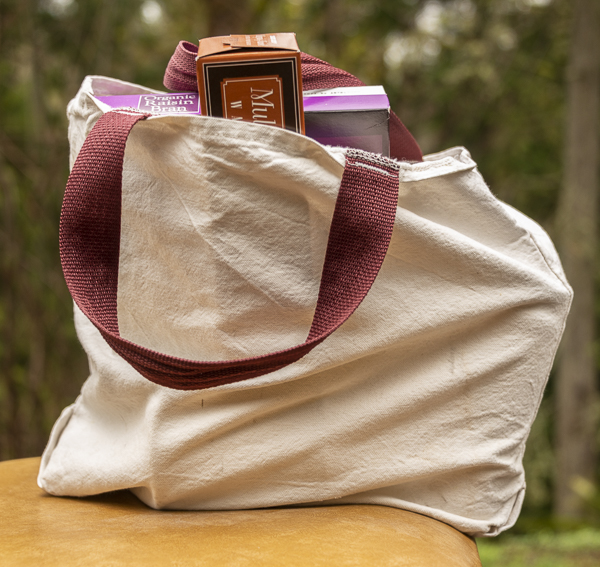
Photo by John F. Williams
Reducing plastics in our waterways does matter. It matters to our health, and the health of everything in our ecosystems. People can take actions to reduce plastic use on the front end, while also advocating for improved filtration systems and removal of existing plastics in our waters. Failure to act could have serious impacts on iconic northwest species such as Orca whales and Chinook salmon, for whom plastic pollution is a threat multiplier, adding to threats due to habitat loss, warming waters, and over-harvesting. The entire ecosystem of the Salish Sea faces serious, possibly irreversible consequences from the impacts of plastics that are infiltrating the entire Puget Sound ecosystem.
If we want the people and animals in our Salish Sea region to thrive, it is absolutely vital that we take action to reduce plastic use and address the amount of plastics and microfibers in our waterways. Come with us as we explore how people who live, work, play, and research in the Salish Sea region are working to respond to this problem, and how you can be part of that change.
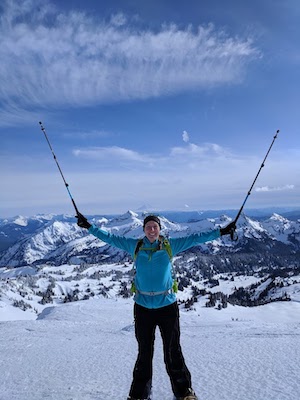
Alison Ahlgrim has spent her entire professional career in the non-profit sector advocating for people, helping vulnerable populations succeed, and working to create systemic change. She currently works as a Housing Program Manager at a permanent supportive housing complex in Everett, helping formerly homeless people transition to life off the streets. Alison also has a background in journalism and freelance writing and enjoys telling people’s stories and photographing nature. Alison can almost always be found outside, whether hiking, backpacking, rock climbing, biking, playing Ultimate Frisbee, gardening or cross-country skiing.
Table of Contents, Issue #7, Spring 2020
Prêt-à-Porter Plastics
by Deb Rudnick, Spring 2020 Photos by John F. Williams except as notedby Deb Rudnick, Spring 2020 Photos by John F. Williams except as noted A bubble wrap bridal gown. Patio umbrella fabric cargo pants. A dress of VHS tape and electric cords. A grocery bag tutu....
Art and Plastics
by Karen Hackenberg, Spring 2020Painting by Karen HackenbergPainting by Karen Hackenbergby Karen Hackenberg, Spring 2020 Between Scylla and Charybdis, oil on linen, 28"x35", 2019, by Karen Hackenberg.My painting Between Scylla and Charybdis, can be seen as a metaphor...
Microplastics
by Julie Masura, Spring 2020Photo by Julie MasuraPhoto by Julie Masuraby Julie Masura, Spring 2020 “What do you know about plastics?" "Absolutely nothing.” This was the beginning of microplastics research at the University of Washington Tacoma’s Center for Urban...
Schroadtrip
"SCHROADTRIP": A PARLEY FOR THE OCEANS INITIATIVEby Nick Schippers (with Hans Schippers), Spring 2020 Growing up surfing on Washington’s remote and rugged coastlines, my brothers and I learned early on just how important our waters are. As avid surfers and watermen,...
Poetry-7
Poetry Spring 2020A Plastic Future Is Not Fantastic by Mahathi Mangipudi Photo by John F. WilliamsSmall Things by Janet Knox We gift them tiny plastic things to sit on a shelf or play and break to signify like or caring or thinking of you then toss in landfills...
Kingdom of Plastics
by Julie Jeanell Leung, Spring 2020Photo of Schel Chelb estuary by John F. WilliamsPhoto of Schel Chelb estuary by John F. Williamsby Julie Jeanell Leung, Spring 2020 Standing on the beach at the Schel Chelb Estuary, three days after the winter solstice in 2012, I...
Addressing the Plastic Problem
by Heather Trim, Spring 2020Photo by John F. WilliamsPhoto by John F. Williamsby Heather Trim, Spring 2020 Plastic waste is an issue for Washingtonians because we are a coastal state, and we have remaining endangered species who are potentially being impacted by...
A New Hope for Plastics
by Adelia Ritchie, Spring 2020Photo by John F. WilliamsPhoto by John F, Williamsby Adelia Ritchie, Spring 2020 If you’ve ever had to clear out those pesky cobwebs from every corner of your house, you know how ubiquitous and stubbornly persistent our house spiders can...
PLEASE HELP SUPPORT
SALISH MAGAZINE
DONATE
Salish Magazine contains no advertising and is free. Your donation is one big way you can help us inspire people with stories about things that they can see outdoors in our Salish Sea region.
We also don't advertise Salish Magazine, so please spread the word of this online resource to your friends and colleagues.
Thanks so much for your interest and your support.
We also don't advertise Salish Magazine, so please spread the word of this online resource to your friends and colleagues.
Thanks so much for your interest and your support.
FIND OUT MORE
Plastic in surface waters of the Inside Passage and beaches of the Salish Sea in Washington State, Science Direct
Plastic waste inputs from land into the ocean, Jambeck Research Group
B.C. researchers race to find the source of microplastics choking the world’s oceans, CBC Radio-Canada
UW oceanography senior finds plastic microfibers are common on Puget Sound beaches, UW News
You’re literally eating microplastics. How you can cut down exposure to them, The Washington Post, 2019
Scientists Find That Microplastics Can Be Carried Long Distances by the Wind, Yale Environment 360, 2019
Macro and micro plastics sorb and desorb metals and act as a point source of trace metals to coastal ecosystems, National Center for Biotechnology Information


